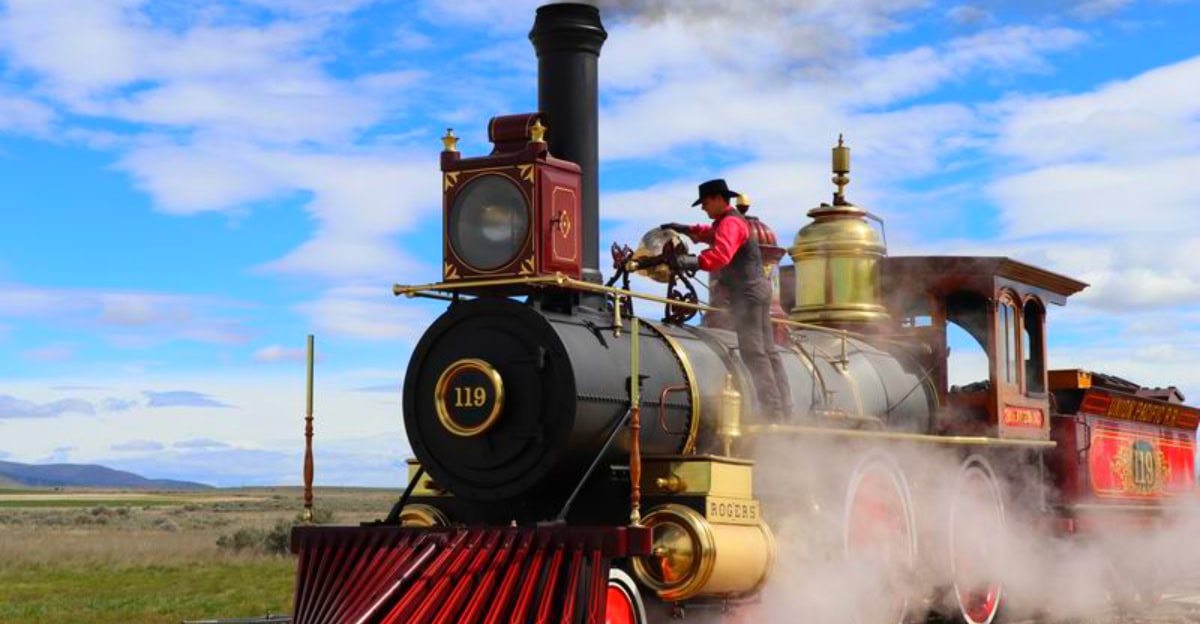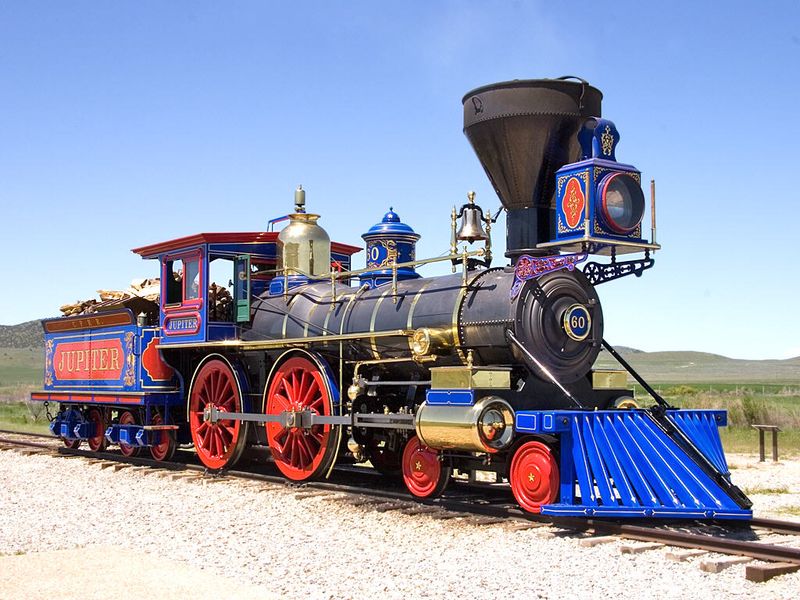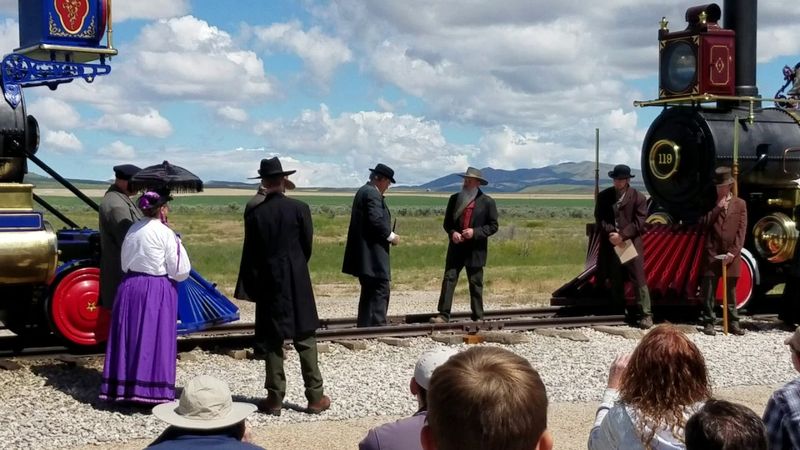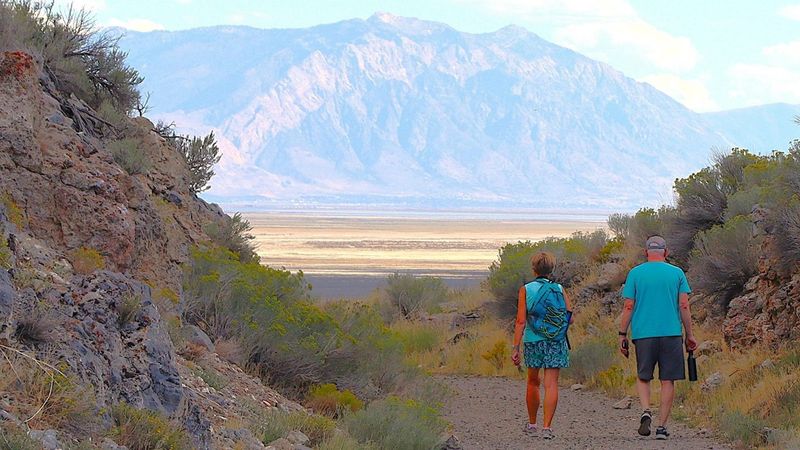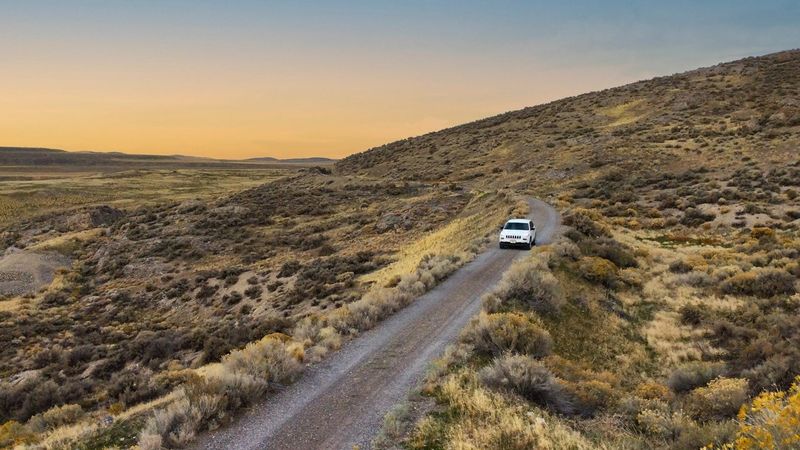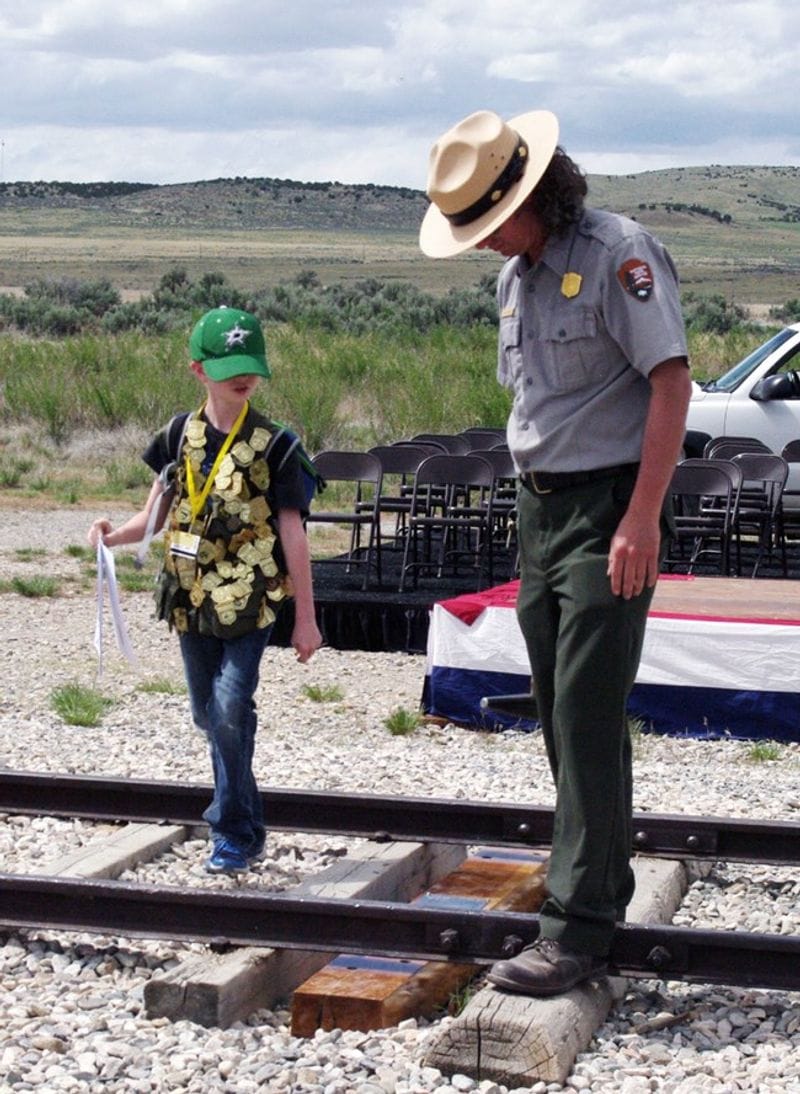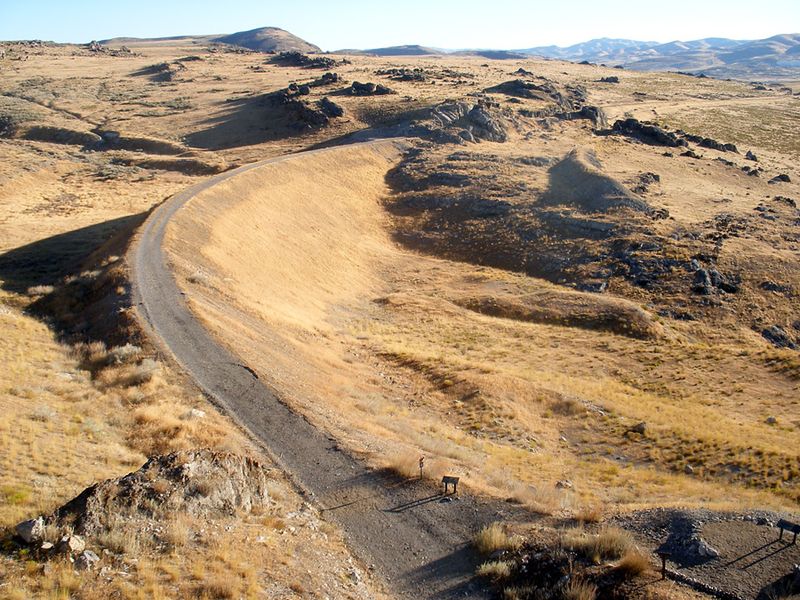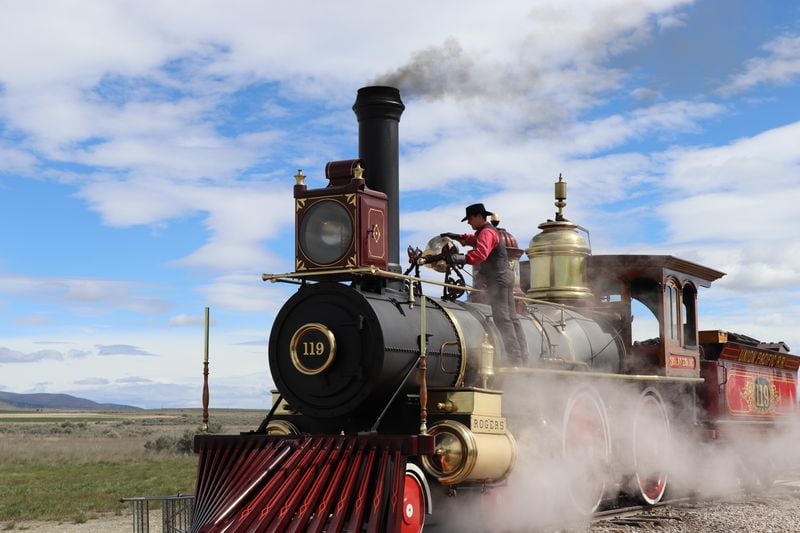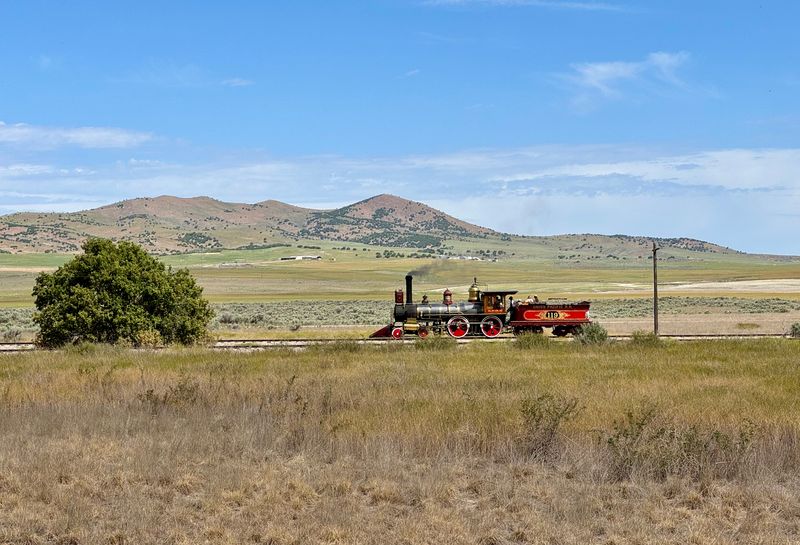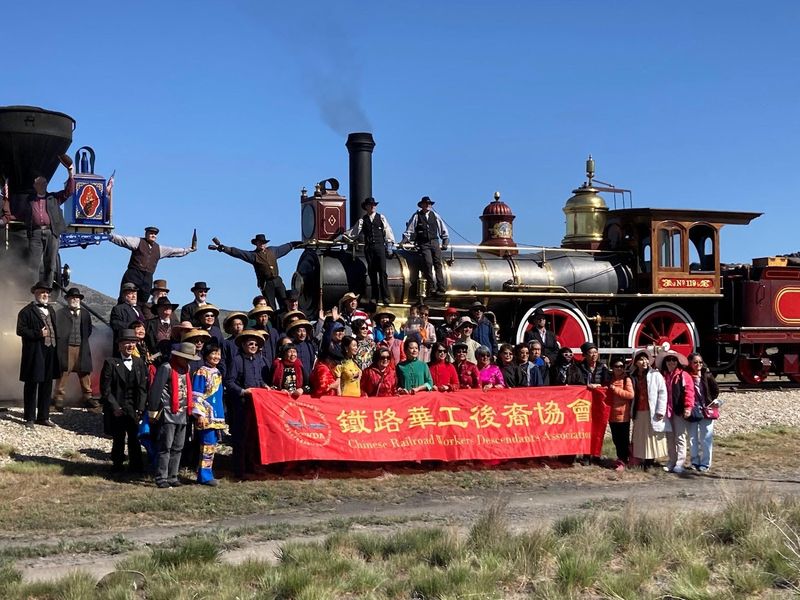On May 10, 1869, two mighty locomotives met nose-to-nose in the Utah wilderness, forever changing how Americans would travel across their vast continent. Golden Spike National Historic Park marks this incredible moment when the first transcontinental railroad was completed. Today, visitors can step back in time to experience where cross-country train travel truly began. This remote yet remarkable destination offers unforgettable glimpses into one of America’s greatest engineering achievements.
1. Experience the Historic Locomotive Demonstrations
Steam billows dramatically as two magnificent replica locomotives spring to life before your eyes. From early May through mid-October, park rangers fire up faithful recreations of the Jupiter and No. 119 engines that made history in 1869.
These daily demonstrations happen at specific times: 10:00 AM for Jupiter’s arrival, 10:30 AM for No. 119, and a combined show at 1:00 PM. The afternoon features departure ceremonies at 3:50 PM and 4:30 PM.
Remember to check the schedule beforehand since operations pause on boiler wash days when maintenance takes priority over demonstrations.
2. Witness the Last Spike Ceremony Reenactment
Every Saturday from Memorial Day through Labor Day, history comes alive with authentic reenactments of the famous Golden Spike ceremony. Costumed interpreters recreate the exact moment when railroad officials drove the ceremonial spike that united America.
These interactive programs begin at 10:30 AM and 1:00 PM, following the morning locomotive demonstrations. Visitors often participate by cheering alongside the crowd, just like spectators did over 150 years ago.
The ceremony includes period-accurate speeches, champagne toasts, and the dramatic meeting of both locomotives. Photography is encouraged during these special weekend events.
3. Explore the Big Fill Loop Trail
Spectacular panoramic views await hikers who tackle this moderately easy 1.5-mile round-trip trail through authentic railroad history. The path follows the original grades where Chinese and Irish workers carved cuts and built fills during the 1860s construction.
From elevated viewpoints, you’ll see the shimmering Great Salt Lake, the towering Wasatch Mountains, and the rugged Promontory Mountains. Interpretive signs explain the incredible engineering challenges workers faced.
Sturdy walking shoes are recommended since the terrain includes loose gravel and uneven surfaces. Early morning or late afternoon hikes offer the best lighting for photography.
4. Drive the Scenic Auto Tours
Two distinct driving routes reveal hidden treasures that most visitors miss during their park experience. The East Auto Tour covers 2 miles of cuts, fills, and stone culverts with breathtaking Wasatch Mountain vistas.
Meanwhile, the West Auto Tour stretches 7 miles to the famous “10 Miles of Track” marker commemorating the Central Pacific’s record-breaking achievement on April 28, 1869. Both routes feature pullouts for photography and exploration.
Winter weather sometimes closes these tours, so check current conditions before planning your visit. The drives work well for families with young children or visitors with mobility limitations.
5. Start Your Journey at the Visitor Center
Every great adventure begins with understanding the incredible story behind America’s first transcontinental railroad. The visitor center opens daily from 9:00 AM to 5:00 PM, featuring fascinating exhibits about the diverse workforce that built this engineering marvel.
Interactive displays showcase artifacts, photographs, and personal stories from Chinese immigrants, Irish workers, Civil War veterans, and other laborers. A short film explains the railroad’s massive impact on American society and commerce.
Park rangers provide maps, current weather updates, and insider tips for making the most of your visit. Clean restrooms and a gift shop complete the facility’s amenities.
6. Engage Kids with the Junior Ranger Program
Young explorers aged 6-12 can earn an official Junior Ranger badge through hands-on activities that make history exciting and memorable. The program takes approximately 30 minutes and focuses on the transcontinental railroad’s construction and significance.
Children complete a workbook with puzzles, drawings, and questions while exploring the park. Activities include measuring railroad spikes, identifying different types of workers, and learning about the challenges of building across mountains and deserts.
Park rangers personally review each child’s completed workbook and conduct a brief ceremony when presenting the coveted Junior Ranger badge. Parents often treasure these moments as much as their children do.
7. Plan for Remote Location Logistics
Golden Spike’s peaceful isolation comes with important planning considerations that can make or break your visit. The park offers no dining facilities, so packing your own food and plenty of water is absolutely essential, especially during hot summer months.
The nearest gas station sits 26 miles east in Corinne via Highway 83, making fuel planning crucial for visitors. Cell phone service can be spotty throughout the area.
This remoteness creates the park’s greatest advantage: you’ll experience the same wide-open landscapes and quiet solitude that railroad workers knew 150 years ago. The peaceful atmosphere provides perfect contrast to crowded tourist destinations.
8. Attend Special Events Throughout the Year
Mark your calendar for the park’s signature celebrations that transform ordinary visits into extraordinary experiences. The May 10th Anniversary commemoration recreates the original 1869 completion ceremony with special reenactments and guest speakers.
Late summer brings the popular Railroaders Festival featuring frontier games, handcar rides where visitors pump their way down actual tracks, and expanded historical demonstrations. Family Day events include activities designed specifically for children and parents to enjoy together.
These special events often include food vendors, live music, and extended hours for locomotive demonstrations. Check the park’s online calendar well in advance since some events have limited capacity.
9. Prepare for Extreme Weather Conditions
Utah’s high desert climate creates dramatic seasonal variations that demand careful preparation for comfortable visits. Summer temperatures frequently soar above 100°F with intense sun and minimal shade throughout the park.
Winter brings the opposite extreme with cold temperatures, snow, and occasional road closures that can limit access to certain areas. Spring and fall offer the most pleasant weather conditions for extended outdoor exploration.
Regardless of season, bring sunscreen, wide-brimmed hats, and more water than you think you’ll need. Layered clothing works best since temperatures can fluctuate dramatically between morning and afternoon, especially during spring and fall months.
10. Honor the Park’s Cultural and Historical Significance
Golden Spike represents far more than a tourist destination; it’s a sacred place where diverse cultures united to achieve an impossible dream. Chinese immigrants, Irish workers, Civil War veterans, and other laborers sacrificed tremendously to connect America’s coasts.
Stay on designated trails, follow all park regulations, and treat artifacts and structures with appropriate reverence. Photography is welcome, but climbing on locomotives or historical structures is strictly prohibited for preservation reasons.
Take time to read interpretive signs that honor the contributions of all workers, especially the often-overlooked Chinese laborers who faced discrimination despite their crucial role in the railroad’s completion.
